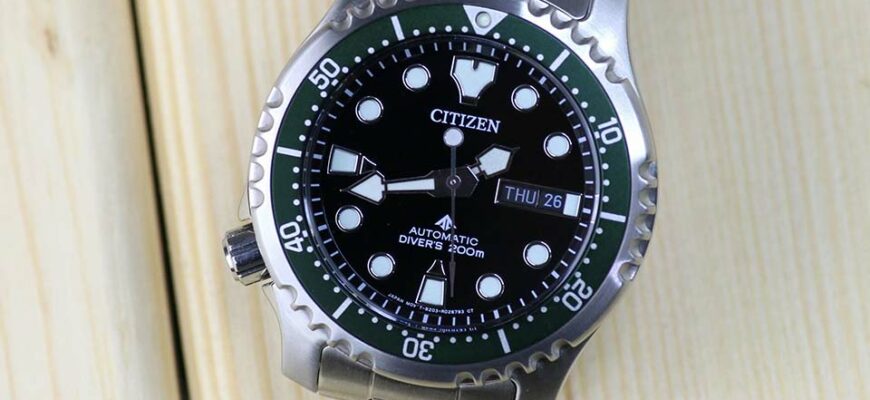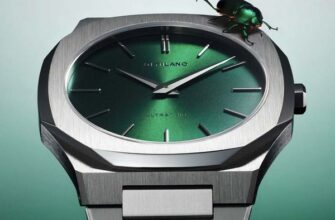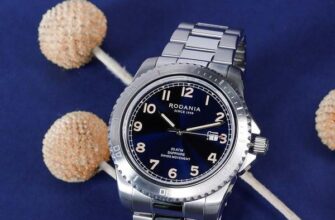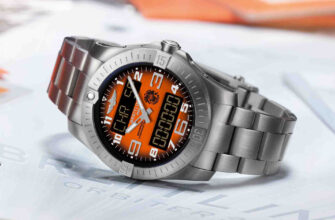Citizen is a Japanese watch and electronics giant. The company was founded over a hundred years ago, in 1918, and the first watch saw the light in 1924. True, it was not a wrist watch, but a pocket watch. Since the production of watches took place under the patronage of the Tokyo City Hall, the name was chosen accordingly, because citizen is translated as “citizen” or “resident”.
The Japanese manufacturer will present the first wrist watch in 1931, which will allow it to firmly gain a foothold in the domestic, and then in the foreign market. Currently, Citizen's portfolio includes not only watches, but also other electronic devices and devices known to many readers.
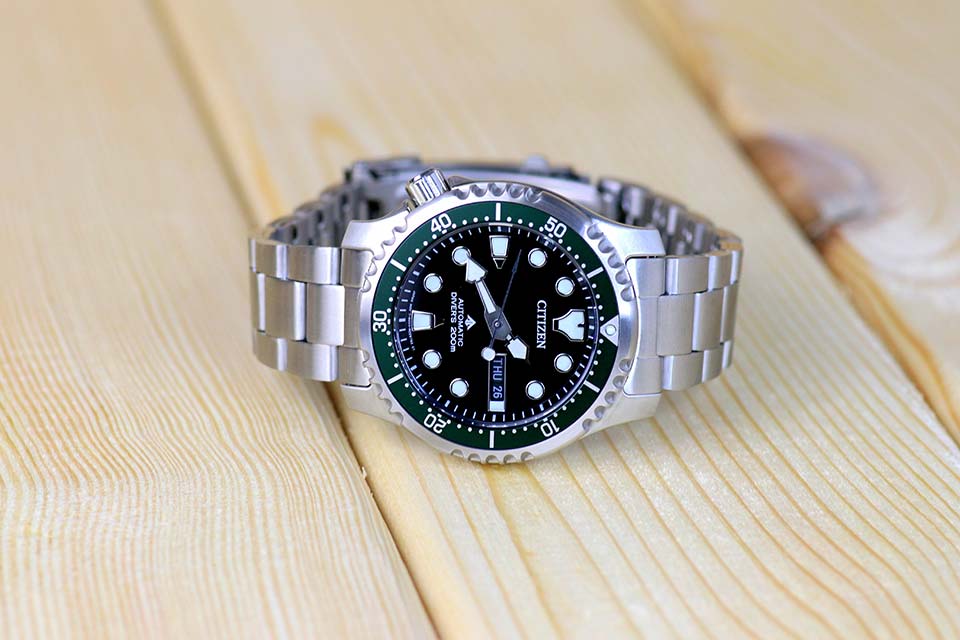
Crown left: unusual
Diving watches have long gained popularity among buyers. Note that such watches are worn not only by those whose life is connected with the study of the depths of the oceans, seas, lakes and rivers. But also land people, that is, those whose life and sphere of activity are far from water. I will say more, watches with good water protection are now worn even with a suit.
But the crown on the left side is more of a rarity than a regularity. A rarity that greatly simplifies the life of left-handers and those who like to wear watches on their right hand. Eminent and not so famous manufacturers follow this path. Even the conservative Rolex not so long ago introduced a novelty with a left, in the truest sense of the word, crown.
The Citizen NY0084-89E model differs from most watches precisely in the location of the crown. If you are used to seeing this watch component to the right of the number 3, then a quick glance at the model in question raises the question: is the watch on the wrong side in the box or is it on the wrist?
I, as a right-hander, wearing a watch on my left hand, for the first minutes could not get used to this order of things. But as soon as the second hand slipped past the central mark 25-30 times, the feeling of anxiety was gone. And this is, at the very least, unusual. In addition, it is interesting and non-standard.
It is worth adding that, following diving traditions, the head is connected to the body with a thread. Water won't leak!
Body: diving standard
Case dimensions are classified as ideal. 42 mm is just what the doctor ordered. In addition, there is one more point: outwardly, the watch seems to be smaller. This is due to the presence of an external rather wide bezel, which slightly steals the size. After all, the dial under the mineral glass is even smaller. The combination of these factors on a subconscious level gives a signal that the clock is smaller than it really is.
The rest of the body is standard - steel.
Bezel: 120 clicks
The bezel is also standard for a diver. 120 clicks when rotated in one direction. A dark green insert dilutes the steel sheen from the case and the blackness from the dial with a positive color. Together they create an ensemble of a venerable diver.
Glow in the dark: diving standard-2
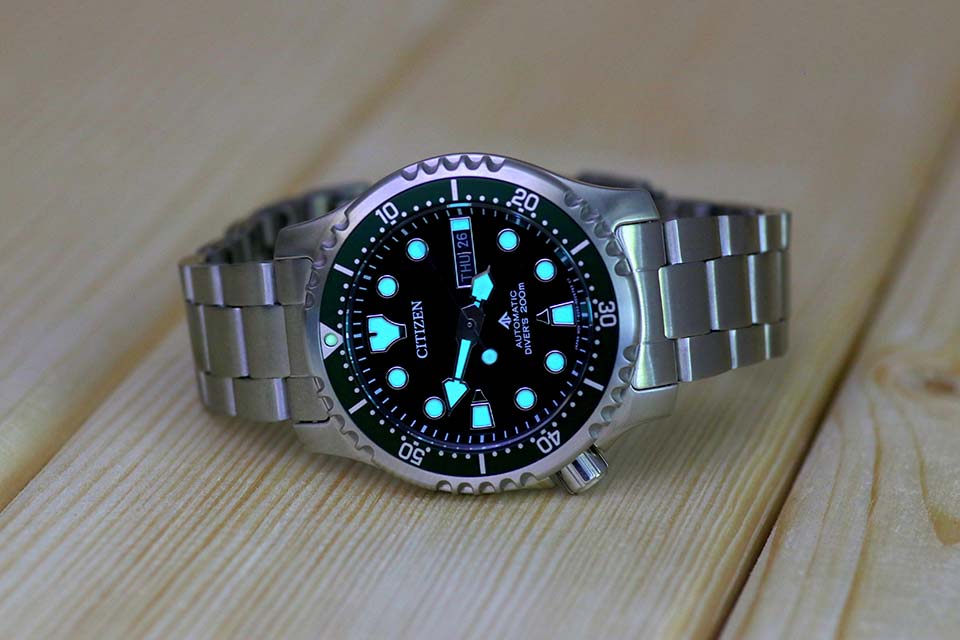
What else is typical for diving watches? Of course it's glow in the dark. Lum is rich, bright and glows so much that you stop noticing it.
Bracelet: quick adjustment
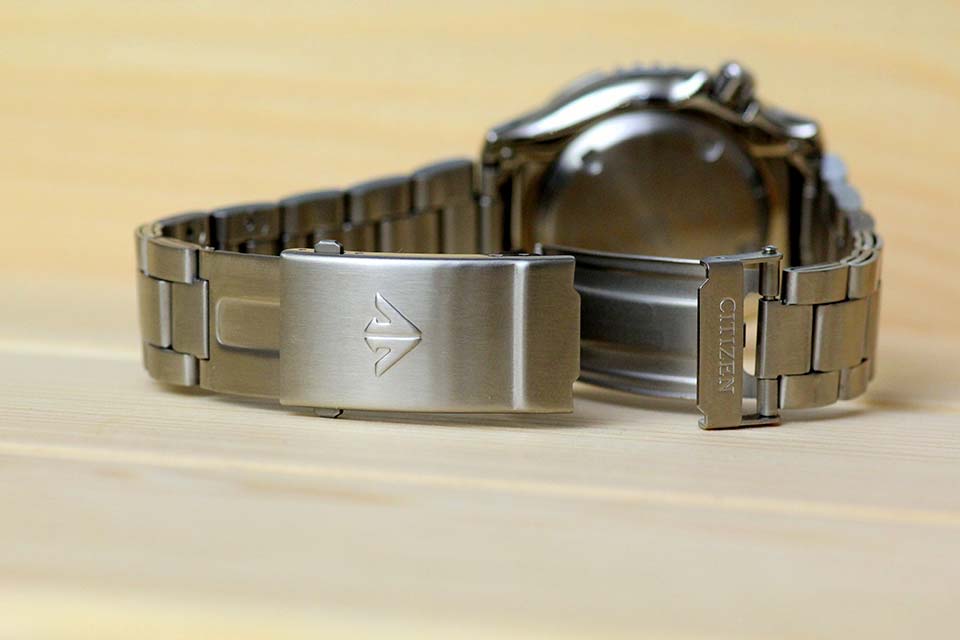
The bracelet also corresponds to the diving direction. In addition to the double clasp, it has an additional extension system that allows you to quickly adjust the size of the bracelet from the wrist to the diving suit and back. In addition, it is convenient when worn in hot weather, when the wrist becomes a little larger, and the girth of the bracelet needs to be loosened.
Mechanism: the story of one find
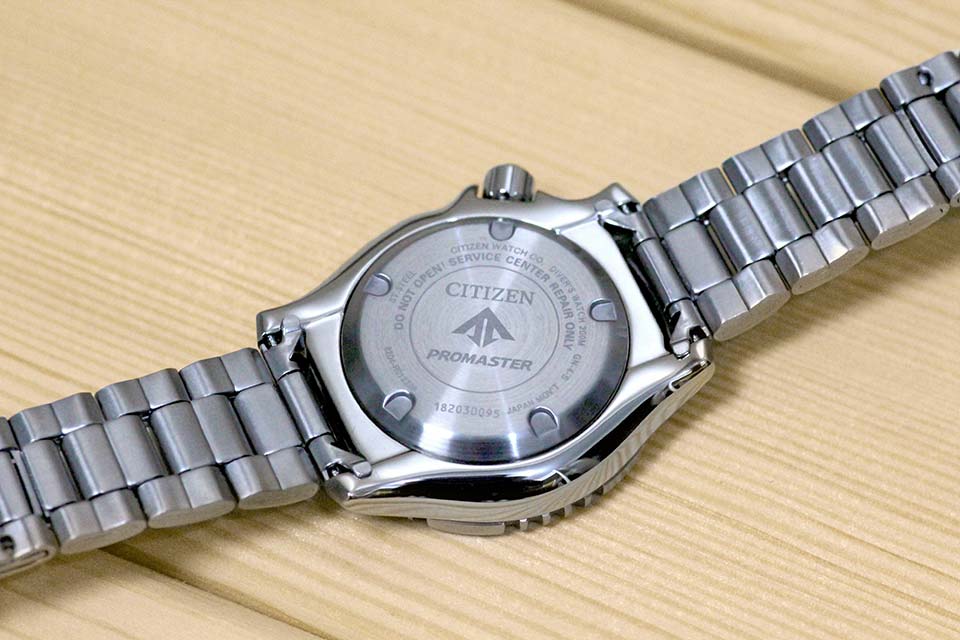
Citizen is its own mechanisms. And this applies to both mechanics and quartz. In 1983, on one of the beaches of Australia, a vacationing tourist discovered an incomprehensible object that was plastered with stones and shells. The find interested this man and he carefully removed a certain number of overgrown ocean inhabitants. It turned out to be a Citizen watch, which also worked. Later they were transferred to Japan. Based on the date of issue and the date of discovery, it was found that after the loss by an unlucky diver, the watch lay in the water for 2-3 years. Isn't that a sign of quality?
The NY0084-89E model is equipped with the 8203 movement with a day/date function, which has been successfully produced from the mid-70s of the last century to the present day.
